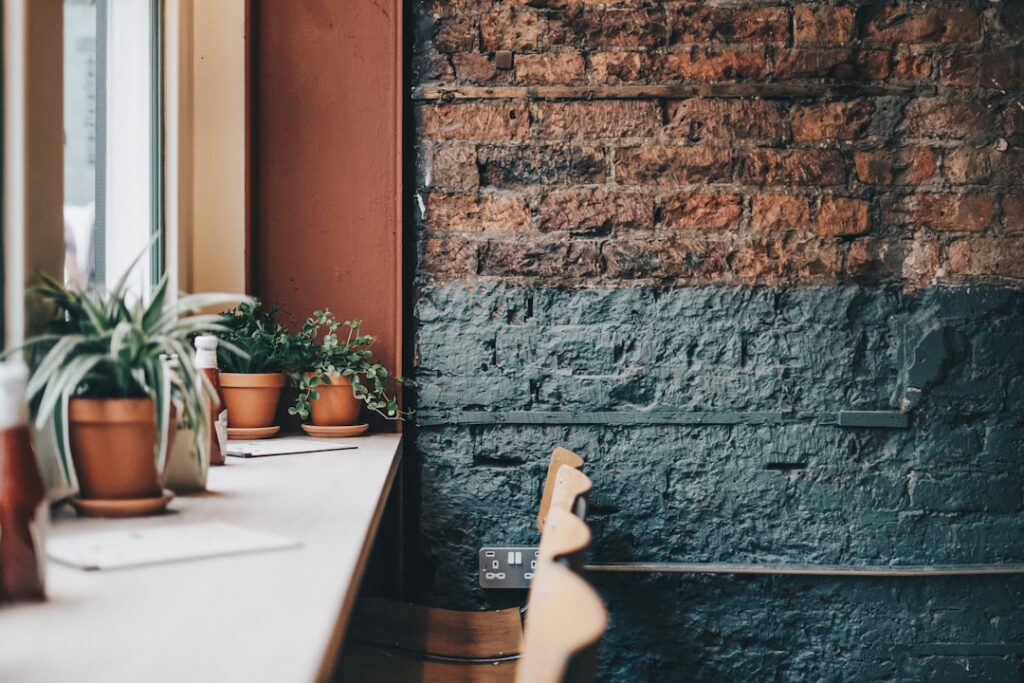Selecting the appropriate furniture is a pivotal step in crafting a space that is not only functional but also aesthetically pleasing. The furniture you choose should reflect your personal style while serving the practical needs of the environment. For instance, in a living room, a well-chosen sofa can become the centerpiece, inviting relaxation and conversation.
It’s essential to consider the scale of the furniture in relation to the room size; oversized pieces can overwhelm a small space, while too-small items may feel lost in a larger area. Additionally, the material and color of the furniture play a significant role in setting the mood of conference room setup for productivity. Softer fabrics and lighter colors can create an airy, inviting atmosphere, while darker woods and rich textiles can lend an air of sophistication and warmth.
Moreover, functionality should be at the forefront of your decision-making process. Multi-functional furniture, such as ottomans that double as storage or coffee tables that can expand for dining, can significantly enhance the usability of a space. When selecting furniture, it’s also wise to consider the flow of movement within the room.
Arranging pieces to facilitate easy navigation not only improves accessibility but also enhances the overall experience of the space. Ultimately, the right furniture should harmonize with your lifestyle, accommodating both your daily activities and your social gatherings, ensuring that your home is a true reflection of who you are.
Key Takeaways
- Choose furniture that fits the space and serves multiple functions
- Use technology to control lighting, temperature, and entertainment
- Create a comfortable environment with soft textures and ergonomic furniture
- Maximize space with multifunctional furniture and smart storage solutions
- Implement effective lighting with a mix of ambient, task, and accent lighting
- Organize and declutter to create a peaceful and efficient space
- Consider acoustics to minimize noise and create a peaceful atmosphere
Utilizing Technology
In today’s fast-paced world, technology has become an integral part of our daily lives, and its incorporation into our living spaces can greatly enhance both convenience and comfort. Smart home devices, such as thermostats, lighting systems, and security cameras, allow for seamless control over various aspects of your environment from a single device or even remotely. This level of integration not only simplifies daily routines but also contributes to energy efficiency, as many smart devices can be programmed to operate only when needed.
For instance, smart lighting can adjust based on natural light levels or occupancy, ensuring that energy is not wasted while creating an inviting ambiance. Furthermore, technology can also play a significant role in entertainment and connectivity within your home. High-quality sound systems and smart TVs can transform a living room into a personal cinema or concert hall, providing an immersive experience for family movie nights or gatherings with friends.
Additionally, with the rise of remote work and online learning, having a well-equipped home office has become essential. Ergonomic chairs and desks that accommodate technology such as monitors and docking stations can enhance productivity while promoting health and comfort. By thoughtfully integrating technology into your space, you can create an environment that is not only modern but also tailored to meet your specific needs.
Creating a Comfortable Environment

The essence of any living space lies in its ability to provide comfort and relaxation. To achieve this, it is crucial to consider elements such as temperature control, air quality, and personal touches that resonate with your individual preferences. A well-regulated climate can significantly impact how comfortable a space feels; investing in quality heating and cooling systems ensures that you can maintain an ideal temperature year-round.
Additionally, incorporating plants into your decor not only enhances aesthetic appeal but also improves air quality, creating a healthier environment that promotes well-being. Personalization is another key factor in fostering comfort within your home. Surrounding yourself with items that hold sentimental value or reflect your interests can create a sense of belonging and tranquility.
This could include artwork that inspires you, photographs that evoke cherished memories, or books that transport you to different worlds. Textiles also play a vital role in comfort; soft throws, plush cushions, and cozy rugs can transform a stark room into a warm haven. By thoughtfully curating these elements, you can create an environment that invites relaxation and rejuvenation, making your home a sanctuary from the outside world.
Maximizing Space
In an era where urban living often means smaller living quarters, maximizing space has become an essential consideration for homeowners and renters alike. The key to achieving this lies in strategic planning and creative solutions that allow for both functionality and style. One effective approach is to utilize vertical space; tall bookshelves or wall-mounted storage units draw the eye upward while providing ample storage without consuming valuable floor space.
Additionally, incorporating furniture with built-in storage capabilities—such as beds with drawers or coffee tables with hidden compartments—can help keep clutter at bay while maintaining an organized appearance. Another important aspect of maximizing space is the layout of your furniture. Arranging pieces in a way that encourages movement and interaction can make even the smallest areas feel more open and inviting.
For instance, using modular furniture that can be easily rearranged allows for flexibility depending on the occasion—whether hosting guests or enjoying a quiet evening at home. Mirrors are also a powerful tool in creating the illusion of more space; strategically placing them can reflect light and make rooms appear larger than they are. By employing these techniques, you can transform any area into a functional and visually appealing environment that meets your needs without feeling cramped.
Implementing Effective Lighting
Lighting is one of the most critical elements in designing any space, as it has the power to influence mood, functionality, and overall ambiance. A well-lit room can feel warm and inviting, while poor lighting can create an atmosphere that feels cold or unwelcoming. To achieve effective lighting, it’s essential to layer different types of light sources—ambient lighting for general illumination, task lighting for specific activities like reading or cooking, and accent lighting to highlight artwork or architectural features.
This multi-layered approach allows for versatility in how you illuminate your space throughout the day and evening. Natural light should also be maximized wherever possible; large windows or strategically placed mirrors can help bring the outdoors in while making spaces feel more expansive. Window treatments should be chosen carefully to allow for flexibility—sheer curtains can filter light during the day while providing privacy at night.
Additionally, incorporating dimmer switches offers control over brightness levels, allowing you to adjust the mood according to the occasion or time of day. By thoughtfully considering your lighting choices, you can create an environment that is not only functional but also enhances the overall aesthetic appeal of your home.
Organizing and Decluttering

A well-organized space is essential for maintaining both functionality and tranquility within your home. Clutter can quickly accumulate if not managed properly, leading to feelings of stress and disarray. To combat this, implementing effective organizational systems is crucial.
Start by assessing each area of your home and identifying what items are essential versus what can be discarded or donated. Utilizing storage solutions such as bins, baskets, and drawer organizers can help keep items neatly contained while making them easily accessible when needed. Regular decluttering sessions are also beneficial in maintaining an organized environment.
Setting aside time each month to evaluate belongings ensures that you remain mindful of what you truly need and use regularly. Additionally, adopting a “one in, one out” policy—whereby you remove an item for every new one brought into your home—can help prevent clutter from building up over time. By fostering habits that prioritize organization and decluttering, you create a serene atmosphere that promotes focus and relaxation, allowing you to fully enjoy your living space without distractions.
Considering Acoustics
Acoustics often go overlooked in interior design discussions; however, they play a significant role in creating a comfortable living environment. Sound quality within a space can greatly affect how we experience it—echoes or excessive noise can lead to discomfort and distraction. To improve acoustics, consider incorporating soft furnishings such as rugs, curtains, and upholstered furniture; these materials absorb sound waves rather than reflecting them back into the room.
This simple adjustment can significantly reduce noise levels while enhancing overall comfort. Additionally, strategic placement of furniture can also contribute to better acoustics. Arranging seating areas away from hard surfaces like walls or large windows helps minimize sound reflection and creates a more intimate atmosphere for conversation or relaxation.
If you live in a noisy area or have neighbors nearby, soundproofing techniques such as adding acoustic panels or using weather stripping on doors and windows can further enhance your living experience by reducing external noise intrusion. By paying attention to acoustics in your home design, you create an environment that fosters peace and tranquility—essential components for any comfortable living space.
When planning the ideal conference room setup, it’s crucial to consider both functionality and aesthetics to foster a productive and engaging environment. A related article that can provide valuable insights into creating such a space is available on a comprehensive guide about enhancing workspaces through design. For more detailed information on how to achieve a productive workspace with effective interior office design, you can read the article here. This resource offers tips on optimizing layout, choosing the right furniture, and incorporating elements that boost productivity and comfort.
FAQs
What are the key components of a conference room setup?
The key components of a conference room setup typically include a conference table, chairs, a projector or TV screen, audio and video conferencing equipment, and a whiteboard or flip chart.
What are the important factors to consider when setting up a conference room?
Important factors to consider when setting up a conference room include the size and layout of the room, the number of participants, the technology requirements, the acoustics, and the overall aesthetic and comfort of the space.
How can I ensure good audio and video quality in a conference room setup?
To ensure good audio and video quality in a conference room setup, it is important to invest in high-quality audio and video conferencing equipment, consider the acoustics of the room, and minimize background noise and distractions.
What are some best practices for arranging furniture in a conference room?
Best practices for arranging furniture in a conference room include ensuring that all participants have a clear line of sight to the screen or presenter, providing ample space for movement and collaboration, and creating a comfortable and inviting environment.
What are some common technology solutions used in conference room setups?
Common technology solutions used in conference room setups include video conferencing systems, wireless presentation systems, digital whiteboards, and integrated audio systems. These technologies help facilitate effective communication and collaboration during meetings.


